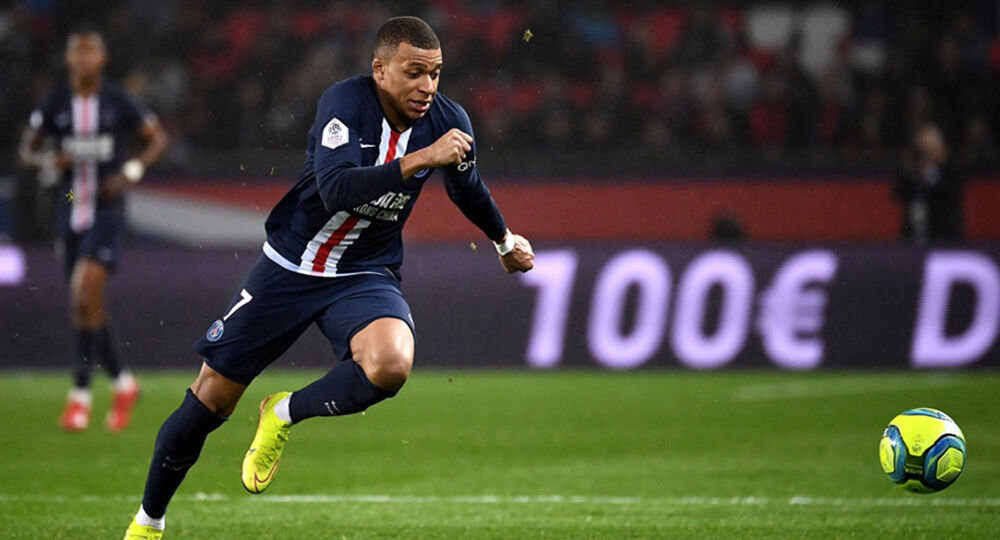
Need for Speed
How is speed characterised & how it affects performance
Speed by definition is ‘the rate of change of position of an object in any direction’, in layman’s terms, how fast can you get from A to B? The importance of speed is evident, especially given the modern game is getting quicker, resulting in speed becoming one of the most important aspects of physical performance. Players require speed both in and out of possession to catch attackers or escape defenders. In fact, it’s well-known counter attacks need to be quick, direct and include committed runners to create an overload, without such speed the opposition would get defenders behind the ball.
The ‘need for speed’ has become more popular over the past 10 years with the elite game being played at a much higher intensity. The demand for explosive players has led to a shift in emphasis with many practitioners across the game rethinking their training philosophies. In my opinion, it is vital for athletes to train as they play meaning the explosive efforts we see on game day need to be replicated at some point during the training week. With hamstring muscle injuries accounting for 12-16% of all injuries usually as a result of high-speed actions, it’s important training physically prepares players for the physical demands (s)he will be exposed to, ultimately lowering the risk of injury.
Speed within football can be broken down into a couple of different area’s, acceleration and max velocity.
Acceleration
Acceleration is that initial movement, the players ability to be able to get from ‘0 to 100’ as quick as possible. During match-play performance, this rarely occurs from a standing start and could occur directly after a turn or a moving start. Time-motion analysis from football games shows players engage in 150-200 actions of 15-to-20-meter sprints with the average duration being 2-4 seconds (Osgach et al., 2010). With this being said, players with superior acceleration are likely to have a competitive advantage over an opponent.
The ability to quickly accelerate requires the athlete to produce high force outputs in a short space of time, manipulation of certain variables and strength training has been shown to be the most effective method to improve rate of force development (RFD). By viewing figure 1, it’s evident different types of training results in different RFD outcomes, however both types of training produce higher RFD compared to untrained players. The term rate of force development actually means being able to apply the maximum force within minimum time (DeWeese & Nimphius, 2016) and with research highlighting faster running speeds are achieved through greater force not rapid leg movement (Weyand et al., 2000), it becomes obvious explosive-ballistic training should be implemented within a players gym programmes.
Figure 1. Rate of Force Development with Alternative Training Techniques (Plisk, 2008)
Acceleration doesn’t just come down to RFD, it’s well-known mobility and technique heavily influence acceleration performance. The development of mobility, particularly with triple flexion and extension is vital for a powerful knee drive during the acceleration phase. Players need to have the ability to apply this knee drive and power in a horizontal direction. In addition, adequate torso and hip stability is required to minimise rotation of the body to avoid lateral movements and loss of force through inefficient application. Finally, ground contact needs to be solid and quick, using a front foot strike with good ankle stiffness in order to minimise braking forces. While figure 2 shows a good example, it is not always possible for players to perform this technique during match play performance, however they should try to replicate this as much as possible.
Figure 2. Acceleration Phase of Sprinting.
Sprinting
Maximal velocity or top speed usually occurs around 30-50m, due to this very rarely do athletes reach top speed. There may only be a few instances a player will they hit their true max velocity, they would need quite a large, undisturbed area to be able to hit this. This has seen a shift in priorities due to the multi directional stop-start nature of football high speed running (HSR) is often tracked and evaluated more. This could be a range of 95%+ of max speed or a speed of 5.5m/s (19.8km/h) (per stat sports).
It’s important to differentiate the acceleration phase and the sprint phase. Figure 3, shows how as an athlete starts to gain top speed, their body position changes. This leads into figure 4 where you can see an upright posture, knee lift, mid foot strike, a short drive phase and minimum upper body rotation.
Figure 3. Acceleration vs Maximum Sprint Body Position
Figure 4. Maximal Speed Running
The RFD during maximal speed running is supported by having a superior stretch shortening cycle (SSC). The SSC refers to elastic strain energy within the muscles which acts like a spring during explosive movements, it’s during maximal sprint speed the body uses fast SSC (<250ms) whereas during acceleration it uses slow SSC (>250ms). The bodies ability to maximise the storage of elastic strain energy alongside maximising the use of SSC whilst keeping an upright posture will help create optimal sprint performance and therefore plyometric training including both fast and slow SSC work should be included within player programming.
Overall, this blog has covered both phases of maximal speed running. The key take home messages to improve your players acceleration and sprint speed performance are strength, mobility and technique. All of these are included within our physical drills and our pre-created training programmes can deliver these game winning explosive movements to your players.





